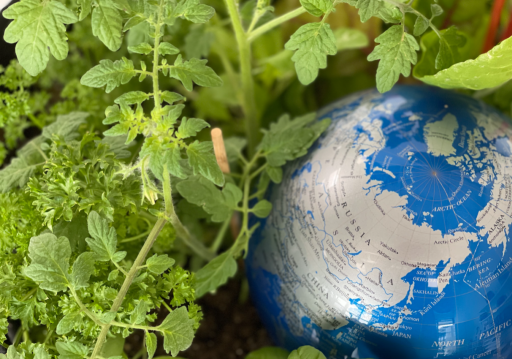
In the spirit of celebrating Earth Day and Earth Month, we are excited to be opening up the conversation around greener living. The way you operate in your home has a large impact on the environment. It might feel daunting to consider how you can make a difference in the health of the environment, but with a handful of tweaks to your daily habits, you can significantly reduce your carbon footprint.
Take a look at this easy list of five things you can do to be greener at home and get started with a greener lifestyle today.
What does it Mean to Go Green?
Going green is something that we should be focusing on all year round. Everyone has to start somewhere; let this year’s Earth Day be the start of a greener living for you. Going green refers to making lifestyle choices that not only promote the health of the planet, but choices that also reduce negative impact on the environment.
Why is it Important to be Greener?

Each day, our Earth suffers the consequences of unimaginable amounts of pollution being introduced into the environment; pollutants that seep into the ground, into our water supplies, into the air, and even into our food.
It is imperative that we all make an individual effort to make choices to reduce these pollutants, however we can. On top of the fact that the Earth is slowly suffering from pollution, pollution also has the ability to make humans very sick. Toxins in the environment can cause our immune systems to weaken, which then makes us unable to fend off disease and illness.
5 Easy Tips for Making a Greener Home
Believe it or not, you can easily make small changes to your daily routine that will result in a more fulfilling and greener lifestyle. Take a look at this list of five ways you can change up your home to be more environmentally conscious:
- Adopt a Plant-Based Diet for you and your Family
- Eating plant-based foods does not only include adopting vegetarianism or veganism. Plant based foods are foods mostly derived from plants or the earth. According to InsideClimate News, about 14.5% of the Earth’s total greenhouse gas emissions come from the meat industry. You can easily make an impact on this number by cutting down on the amount of meat you consume.
- Start a Garden
- Not only is gardening a phenomenal way to destress and spend time with your family, it is also a wonderful answer to reducing the use of harmful chemicals that are used in commercial farming. When you grow your own garden, you know exactly what goes into it – and more importantly, you know what stays out of it. You also reduce the amount of gasoline you use because you are saving trips to the grocery store!
- Make your Own Compost
- Composting is an easy way to be more responsible with the amount of waste your household produces. By making your own compost, you reduce the amount of carbon emissions given off from landfills each year. This is a wonderful way to reduce your carbon footprint, while also providing your garden with hardy nutrients. Take a look at our Complete Guide to Composting for more information.
- Collect Rainwater to Water your Garden
- According to Redfin Blog, one night of rain can deposit about 300 gallons of water! You can catch rainwater and use that to water your garden or your lawn, instead of wasting valuable fresh water by using a hose or a sprinkler. For more tips on how to collect rainwater, take a look at the article, Rainwater Harvesting 101, by Water Cache.
- Use Cold Water for your Laundry
- Using cold water for your laundry is an easy and effective way to be more environmentally conscious at home. According to BioFriendly Planet, 90% of your washing machine’s energy goes towards heating the water for a wash. Washing your clothes in cold water also does less wear and tear on the fabrics, so they will last longer – double the benefits!
Go Green Today
As you can see, it does not take much effort at all to adopt small changes that result in a more environmentally friendly living. Set the example for your community; start a community garden, or start a community dialogue about how you can collectively go greener now. It all starts with a seed.
